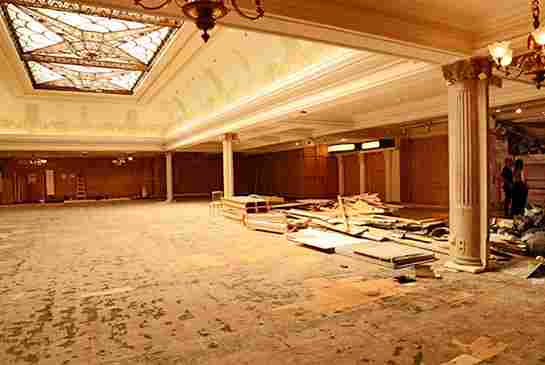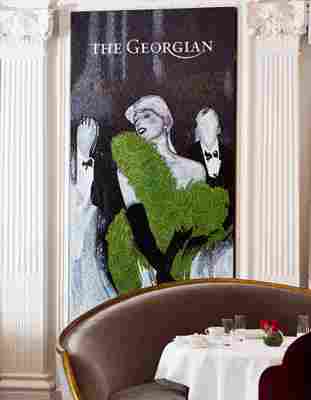Harrods holds a special place in London lore. Established in 1849 by Charles Henry Harrod as a small grocery in the Knightsbridge area, within four decades it had grown into one of the world’s foremost department stores. Then in 1913, to further attract the city’s well-heeled shoppers, Harrods created the Georgian Restaurant, a stylish fourth-floor space, crowned in 1928 by a filigreed skylight. More than a century after its opening, the eatery remains a beloved institution.
Today Harrods is owned by the Qatari royal family, and as part of a roughly $400 million investment in the store, British designer Christopher Guy Harrison, head of the furnishings firm Christopher Guy, was asked to submit ideas for freshening up the Georgian, whose cramped ranks of identical tables and stiff chairs had become a bit tired and outdated. Harrison, however, proposed a fairly thorough makeover. As he puts it, "The place was left untouched for more than 20 years—it needed an overhaul."

Harrison was eager to restore the interiors’ original sense of occasion. The dining room’s 1920s brass chandeliers abide, protected by the preservation group English Heritage, and Harrods provided a new Art Deco–inspired carpet. But Harrison took off from there, adding an array of luxurious seating. Along with plush velvet banquettes, he introduced armchairs with curving gilded frames and mahogany dining chairs with carved camellias sprouting from their backs—infusing the space with a distinctive prewar elegance. "The design of the new furnishings was based on my interpretation of how Coco Chanel would style her home in today’s world," Harrison explains, noting that Chanel herself visited Harrods often.

Just inside the graceful vine-patterned iron screens newly installed at the restaurant’s entrance, guests are now greeted by a sculpture—crafted from hand-hammered copper—of a begowned lady sashaying across the floor. Set between windows on the west wall, three large mosaics feature scenes redolent of the Roaring ’20s and glamorous ’30s. And covering the opposite wall is perhaps the most fanciful of Harrison’s additions: a vast five-panel screen carved with a relief of Harrods coated in silver paint. "Throughout the design process, I would think about Charles Henry Harrod," Harrison says. "If he were alive, how would he want the space to look?" harrods.com
* *
